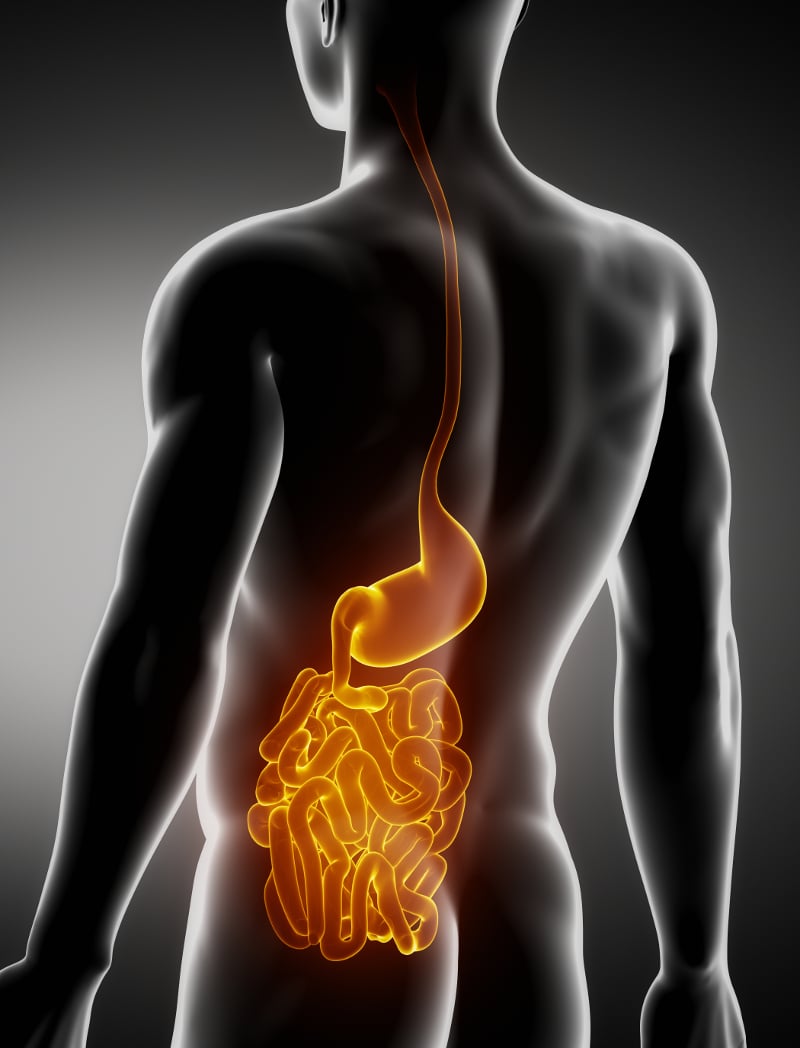
Patients with CD can experience diarrhea, fever, nausea, abdominal pain, and severe weight loss.1 Chronic intestinal inflammation leads to progressive and destructive disease associated with damage to the mucosa.3 Over time, patients may develop stricturing or penetrating complications of disease, and more than 50% of individuals with CD require surgery within 10 years of diagnosis.4,5 The symptoms of CD may also result in significant anxiety, stress, depression, and isolation.1,6 Although CD does not significantly shorten life expectancy, patients are subject to a lifetime of suffering because of their symptoms, severe limitations on their social and family life, hospitalizations, surgeries, and an overall reduced quality of life.5,7,8
The prevalence of CD is approximately equal in men and women.9 Women with CD may experience disease differently than men, exhibiting lower quality of life and a greater risk of depression and anxiety.10 For women with CD who become pregnant, approximately one-third experience worsening disease activity.11 Studies have shown that active disease and flares during pregnancy are associated with negative pregnancy outcomes of preterm delivery and low birth weight infants.12 Furthermore, approximately 20% of women with CD flare within 6 months of giving birth.13
1. Crohn’s & Colitis Foundation of America. The Facts About Inflammatory Bowel Diseases.
http://www.ccfa.org/assets/pdfs/updatedibdfactbook.pdf. Published November 2014.
Accessed July 25, 2018.[OM1].
2. Kappelman MD, Moore KR, Allen JK, Cook SF. Recent trends in the prevalence of Crohn's disease and ulcerative colitis in a commercially insured US population. Dig Dis Sci. 2013;58(2):519-525.
3. Neurath MF. Cytokines in inflammatory bowel disease. Nat Rev Immunol. 2014;14(5):329-342.
4. Cosnes J, Cattan S, Blain A, et al. Long-term evolution of disease behavior of Crohn's disease. Inflamm Bowel Dis. 2002;8(4):244-250.
5. Domenech E, Manosa M, Lobaton T, Cabre E. Optimizing post-operative Crohn's disease treatment. Ann Gastroenterol. 2014;27(4):313-319.
6. Loftus EV, Jr., Guerin A, Yu AP, et al. Increased risks of developing anxiety and depression in young patients with Crohn's disease. Am J Gastroenterol. 2011;106(9):1670-1677.
7. Bernklev T, Jahnsen J, Lygren I, Henriksen M, Vatn M, Moum B. Health-related quality of life in patients with inflammatory bowel disease measured with the short form-36: psychometric assessments and a comparison with general population norms. Inflamm Bowel Dis. 2005;11(10):909-918.
8. Baumgart DC, Sandborn WJ. Crohn's disease. Lancet. 2012;380(9853):1590-1605.
9. Loftus CG, Loftus EV, Jr., Harmsen WS, et al. Update on the incidence and prevalence of Crohn's disease and ulcerative colitis in Olmsted County, Minnesota, 1940-2000. Inflamm Bowel Dis. 2007;13(3):254-261.
10. Hauser G, Tkalcic M, Stimac D, Milic S, Sincic BM. Gender related differences in quality of life and affective status in patients with inflammatory bowel disease. Coll Antropol. 2011;35 Suppl 2:203-207.
11. Hashash JG, Kane S. Pregnancy and Inflammatory Bowel Disease. Gastroenterol Hepatol (N Y). 2015;11(2):96-102.
12. Bush MC, Patel S, Lapinski RH, Stone JL. Perinatal outcomes in inflammatory bowel disease. J Matern Fetal Neonatal Med. 2004;15(4):237-241.
13. Pedersen N, Bortoli A, Duricova D, et al. The course of inflammatory bowel disease during pregnancy and postpartum: a prospective European ECCO-EpiCom Study of 209 pregnant women. Aliment Pharmacol Ther. 2013;38(5):501-512.